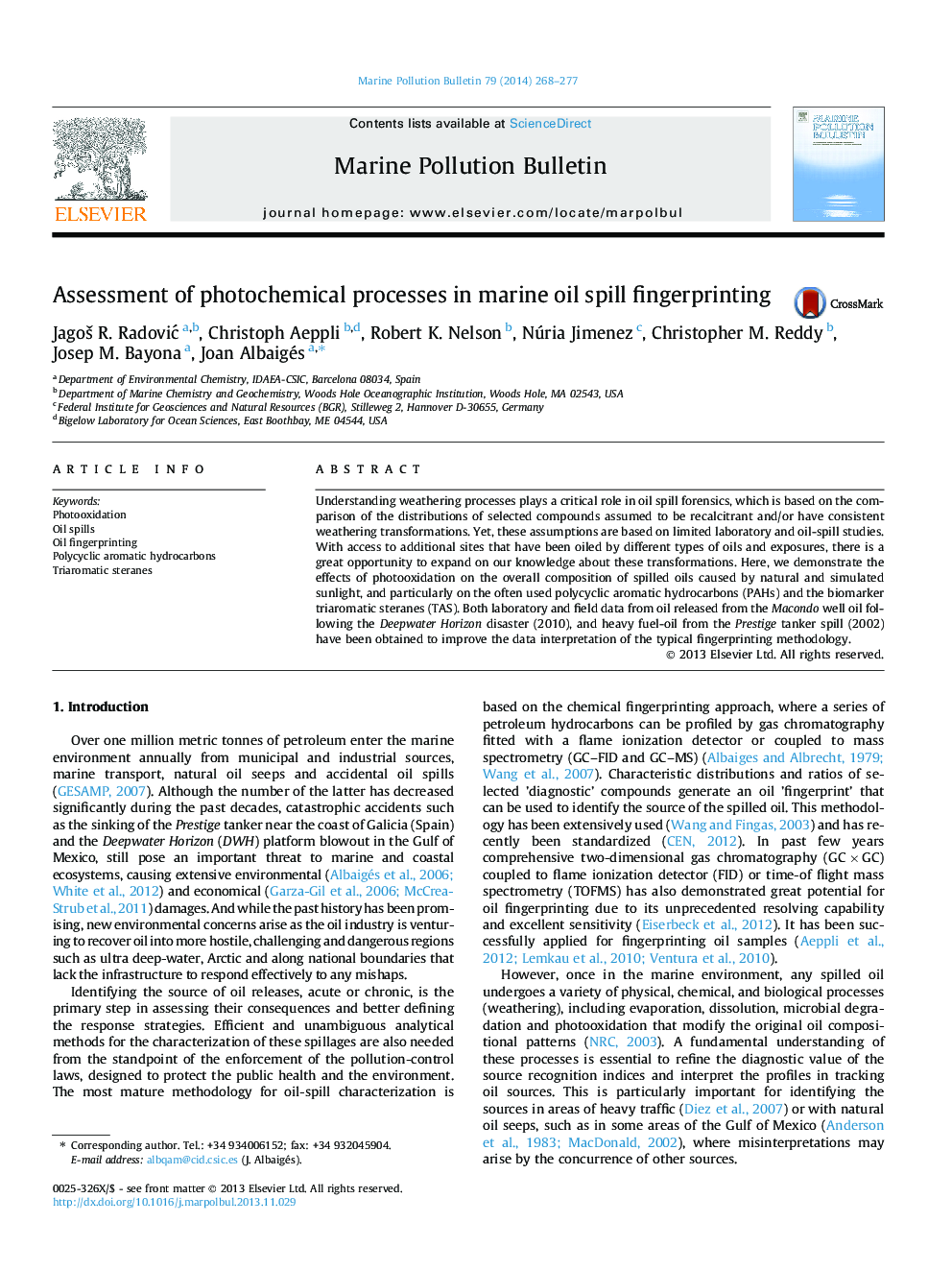| Article ID | Journal | Published Year | Pages | File Type |
|---|---|---|---|---|
| 6358900 | Marine Pollution Bulletin | 2014 | 10 Pages |
â¢Weathering processes are of particular importance for oil spill forensics.â¢We demonstrate the effects of photooxidation on the chemical composition of spilled oils.â¢The effect on PAHs and the triaromatic steranes (TAS) is extensively studied.â¢New criteria for interpreting the diagnostic ratios of spilled oils are developed.
Understanding weathering processes plays a critical role in oil spill forensics, which is based on the comparison of the distributions of selected compounds assumed to be recalcitrant and/or have consistent weathering transformations. Yet, these assumptions are based on limited laboratory and oil-spill studies. With access to additional sites that have been oiled by different types of oils and exposures, there is a great opportunity to expand on our knowledge about these transformations. Here, we demonstrate the effects of photooxidation on the overall composition of spilled oils caused by natural and simulated sunlight, and particularly on the often used polycyclic aromatic hydrocarbons (PAHs) and the biomarker triaromatic steranes (TAS). Both laboratory and field data from oil released from the Macondo well oil following the Deepwater Horizon disaster (2010), and heavy fuel-oil from the Prestige tanker spill (2002) have been obtained to improve the data interpretation of the typical fingerprinting methodology.
Graphical abstractDownload full-size image
